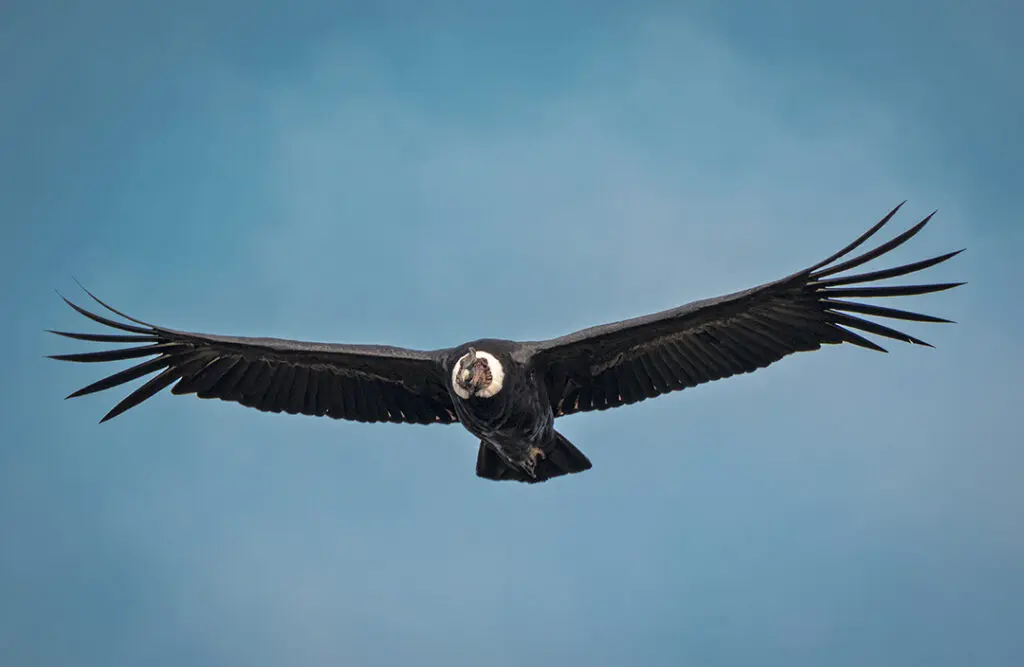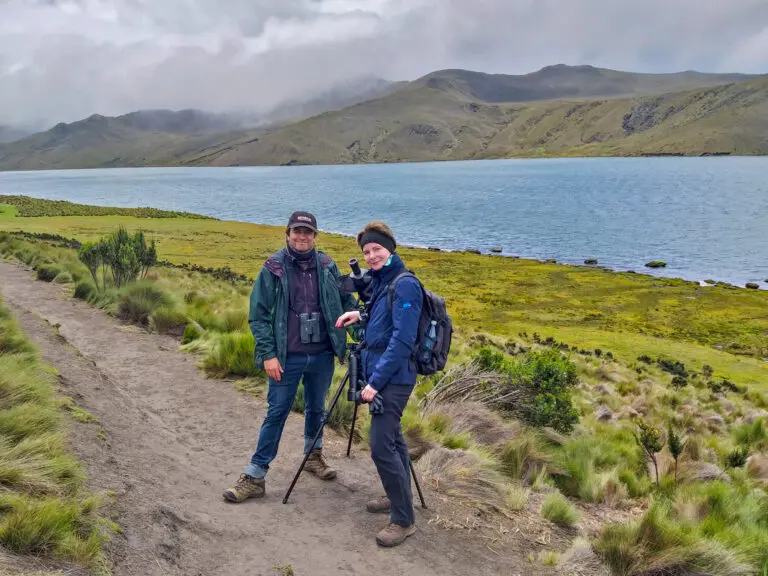ANDEAN CONDOR DAY TRIP
ANTISANA NATIONAL PARK
An early pick-up from Quito at 7 am brings us to the western entrance of Antisana Ecological Reserve, just about 48 km (30 miles) southeast from Quito, with a mixture of elfin forest below and paramo grassland above. The snow-covered top of Antisana Volcano is located at 18,886 ft a.s.l. It’s the fourth highest peak of Ecuador and it’s covered by the largest ice cap in the country. The Park was initially created as the Antisana Ecological Reserve (REA) established in July 1993 by the Ecuadorian State, in 2021 the category was changed by ministerial agreement and its official name was changed to Antisana National Park. It is a protected area which is located in the Cordillera Real de los Andes, between the provinces of Napo and Pichincha, and includes lush Andean forests and moors located in the plains and foothills of the volcano of the same name. Something that makes this place wonderful is the contact with undisturbed nature apart from crowded touristic places and it’s beautiful Andean scenery. The reserve provides opportunities to understand the geological history of the Andes and the importance of this unique ecosystem.

The Andean Condor (Vultur gryphus) in Ecuador is classified as Critically Endangered. Birdlife categorizes Antisana as an Important Bird Area. This reserve has at least 4 different cliffs in which up to 35 Andean condors have been recorded perching and using these areas as their nesting sites, this is a large number considering an estimated population of just 150 wild individuals in the country.
Today you’ll explore one of the most important reserves so close to the city of Quito. You may see many high altitude and local specialties including the unique and close to endemic Ecuadorian Hillstar visiting the Chuquiragua bushes, Black-tailed Trainbearer, Stout-billed Cinclodes, Andean Tit-Spineatil, Many-striped Canastero, Tawny Antpitta, Tufted tit-Tyrant, Red-crested Cotinga, Paramo Pipit, Plumbeous Sierra-Finch and Black-winged Ground-Dove. We’ll have the chance to see many Carunculated Caracaras, Andean Gulls, Andean Lapwings, and many other species that are absent or difficult at other sites such as the rare Andean Ibis.

Arriving at Lake Micacocha, a hybrid word of the Spanish word mica, a shiny mineral that reflects sunlight, and the Quichua word cocha, meaning body of water. La Mica lake is best known to protects a vital source of water for the residents of Quito. Here you’ll scan the lake shore for Slate colored Coots, Andean Teals, Andean Ruddy Ducks, and Yellow-billed Pintails. This is also the best place in Ecuador to observe closely the regal Silvery Grebe. After a very productive morning you’ll drive back for lunch to Tambocondor where apart of serving delicious food, you’ll have a privilege view to the Condor’s cliffs and also have the opportunity to admire several species of hummingbirds feeding from feeders and flowers of there beautiful garden. Some of the species you’ll look for includes the outstanding Giant Hummingbird, Tyrian Metaltail, Shinning Sunbeam, Great Sapphirewing, Sparkling Violetear among others, later you’ll prepare for your drive to return to Quito .
Trip considerations
PLEASE NOTE:
This is a sample itinerary subject to change due to weather conditions, safety, and particular interests of guests and groups. Changes and additions are made in order to maximize birding and wilderness enjoyment.
Pricing
- 1 pax USD $330
- 2 pax USD $195
- 3-4 pax USD $145
- 5-6 pax USD $125
- 7-8 pax USD $110
-Naturalist & Birding Guide
-Private transportation
-Lunch and soft drinks
-Coffee and tea at Tambocondor
-All excursions and entrance fees to the reserves
-Tips
-Alcoholic beverages
-Any other item not specified



